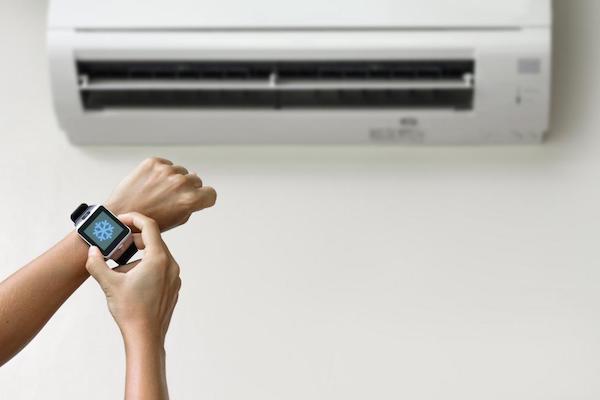We’ve already seen air conditioner technology transform over the past 10 years in a move towards more eco-friendly efficiencies. With a ton of research and focus on further possible improvements, there’s a lot to be excited about the future of the cooling industry.
Let’s look at some of the top newsmakers.
Air conditioners you can wear
There’s an innovative take on cooling currently being crowdfunded. The Reon Pocket is a device the size of a wallet for cards. It can fit into an undershirt designed explicitly for the gadget. It then uses thermoelectric cooling to cool down or warm it.
It can even be controlled using a smartphone. Here’s the win. It can cool down and warm up the body to healthy levels, is super light, and charges on a USB-C.

ACs joining the fight against global warming
There is technology currently in development, according to Wired.com, that will turn AC units in skyscrapers into CO2 guzzlers. The aircon would also be able to produce fuel that could power cars.
They refer to it as ‘crowd oil’. To retrofit the units, they would need a filter added that can absorb CO2 and water from the environment. Then an electrolyzer would remodel the oxygen molecule to create hydrocarbon fuels.
There are already research plants testing how CO2 can be converted into a liquid product.
Looking to the past for the future
SkyCool Systems, a Californian company, reports it is developing a cooling system that is very energy efficient. It uses a method of cooling called ‘radiative cooling,’ and there’s nothing new about it. Humans have used the concept for hundreds of years.
The modern developers are working at finding a material with a surface that can absorb, emit, and reflect heat in the right balance, and describe their invention as looking similar to a solar panel.
The material in the panel reflects the light and heat of the sun. This causes the air below it to drop lower than the air around it. A series of pipes are exposed to this colder air, which cools down the fluid inside the pipes.
This can be harnessed to cool down fridges, for example. For cooling homes, they would look at using radiant cooling to cool down ceilings and thereby control the temperature of rooms.
The no-wind solution
This new technology is already here, thanks to Samsung. The Wind-Free technology used in a new cooling system works as follows.
When the AC has reached the set temperature, it maintains this temperature without a wind current moving the air around the room. Instead, the cold air is dispersed through micro air holes.
The units also work on R32, the environmentally friendly refrigerant, to meet regulations in Europe. Compared to R410A refrigerant, R32 is twice and eco-friendly. That’s because it is very efficient and can be used in smaller amounts in systems.
Meet the self-cooling roof
Technically this product would replace the need for an aircon or reduce our reliance on them to control the temperature in our homes. A typical roof absorbs the heat from the sun, and this has the effect of warming up the house or building.
At night the heat is released as it cools down. The new roofing material being trialed by researchers can stay cooler than the air that surrounds it.
The surface is made by placing multiple layers of plastic on silver. Together, they can reflect sunlight, so the roof surface stays up to nine degrees cooler than a regular roof because most of the radiation is reflected. (Most roofing absorbs 90 percent of light.
Even the most advanced materials currently used can reflect about 70 percent of sunlight.) The new coating is seen as a way to keep houses cooler but also to cool down urban areas generally. We already know that cities are warmer than rural areas because of the effect of coined ‘urban heat islands’.
The move to this high-tech roofing will not only reduce our reliance on air conditioning to keep us cool, but it will also be cost-efficient and environmentally friendly.
The tests are showing promising results having a marked effect even when the roofing coating was covered with dirt and dust in testing. The other decisive factor is that the materials used for this innovative roofing are affordable and easy to install.
This could be a game-changer for both the HVAC and roofing industries.
With global warming becoming an increasing concern on our planet, we must continue to innovate the aircon market.
Not only will we need to continue to adopt designs that have little impact on the environment, but we will also need to look at providing non-expensive cooling solutions for those communities that cannot afford some technologies and power costs.